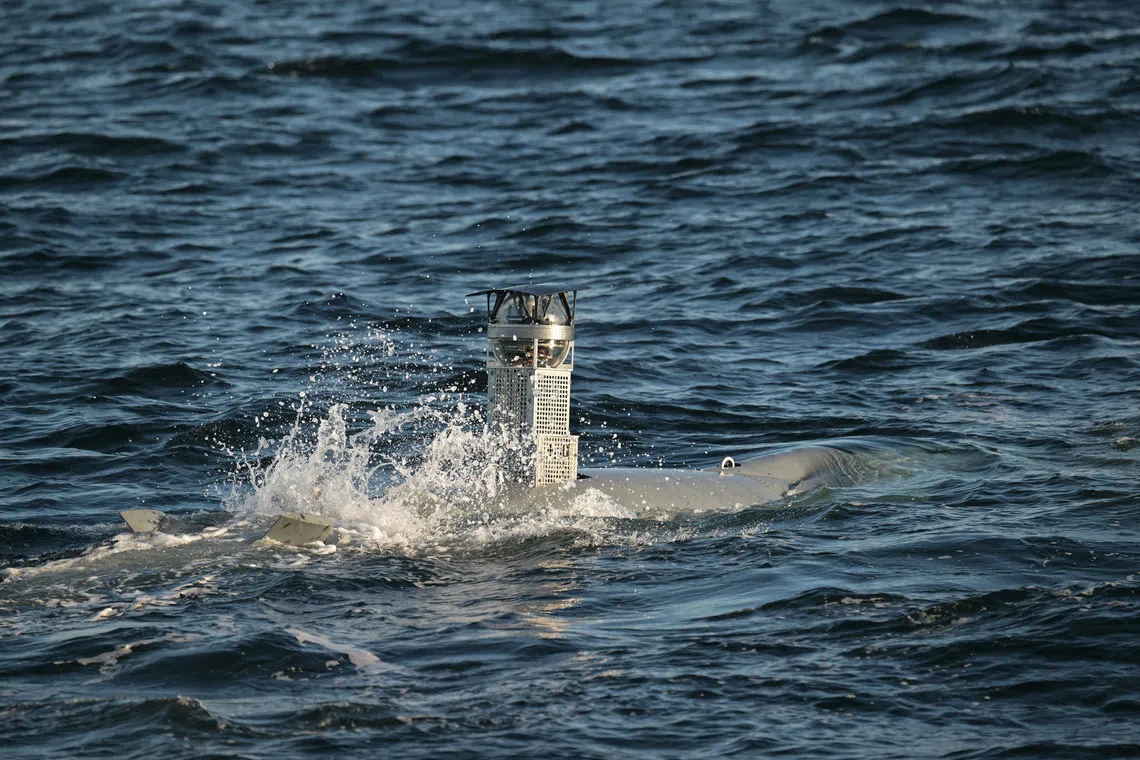European Nations Bolster Defense with Advanced Underwater Drones
In a significant move reflecting heightened defense readiness across Europe, two unnamed European governments have finalized agreements to acquire advanced autonomous underwater drones from Germany's Euroatlas. These deals, collectively valued at over 100 million euros ($116 million), underscore a broader trend of increased military spending in response to perceived threats, particularly from Russia.
Greyshark AUVs: Key to Enhanced Maritime Security
The Bremen-based manufacturer confirmed the sale of its 'Greyshark' autonomous underwater vehicle (AUV), marking its first contracts with European defense ministries. While Euroatlas CEO Eugen Ciemnyjewski refrained from disclosing the purchasing nations, he noted their close collaborative relationship. He clarified that the Greyshark drones are intended for specialized military applications, though they will not be weaponized.
Autonomous underwater drones, like the Greyshark, offer a versatile array of military capabilities. Experts highlight their utility in critical tasks such as monitoring vital undersea infrastructure, tracking submarine movements, and detecting naval mines. Despite their potential, these sophisticated systems present technical challenges, including high costs—potentially millions of dollars per unit—and the complexities of extended underwater operation.
Global Demand and Technological Advancements
The current Greyshark model boasts an impressive operational endurance of 5.5 days, with Euroatlas actively developing an enhanced version capable of remaining submerged for an remarkable 16 weeks. Ciemnyjewski also revealed substantial interest from other countries, spanning both Europe and Asia, indicating a growing global demand for advanced naval robotics.
This development mirrors a worldwide acceleration in naval drone technology. The ongoing conflict between Ukraine and Russia has prominently featured naval drones, particularly surface vessels. Ukraine's Security Service (SBU) recently showcased its latest 'Sea Baby' surface drone, capable of operating over 1,500 km and carrying a 2,000 kg payload – double its predecessor.
Simultaneously, NATO allies have deployed naval drones alongside traditional frigates and patrol aircraft as part of missions aimed at safeguarding critical maritime infrastructure. Beyond Europe, Australia is investing A$1.7 billion ($1.1 billion) in a fleet of 'Ghost Shark' autonomous undersea vehicles, developed in partnership with its defense force and U.S. startup Anduril Industries, for surveillance and strike capabilities. The global landscape of naval defense is clearly undergoing a significant technological transformation.

